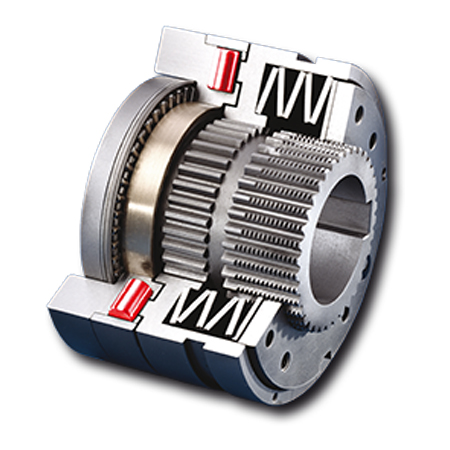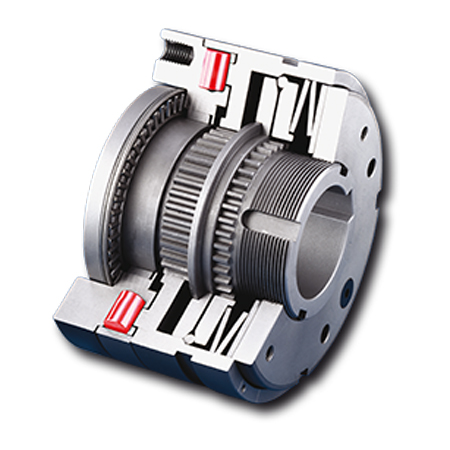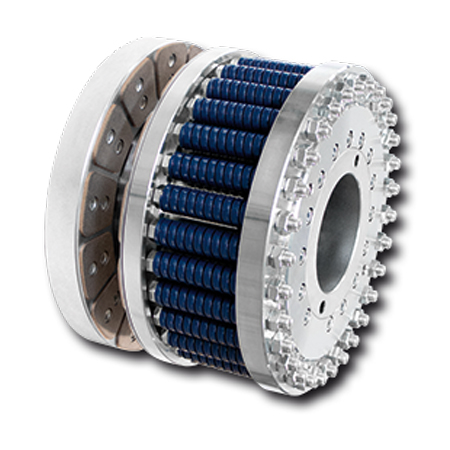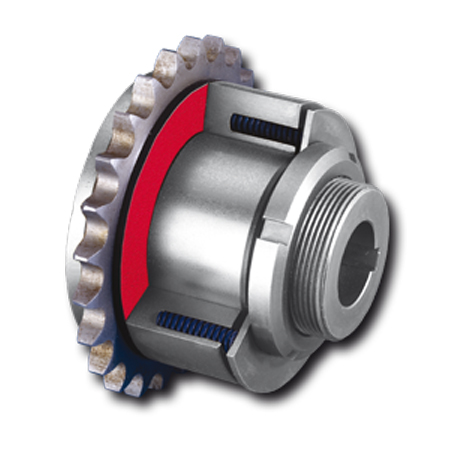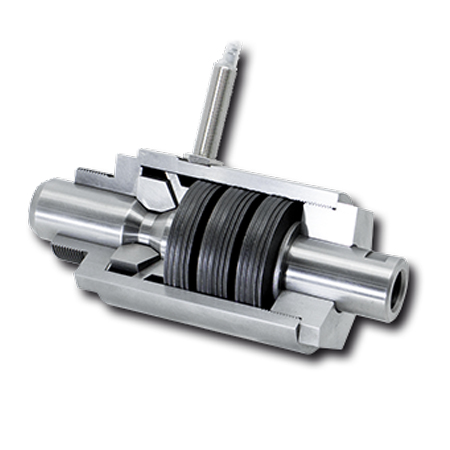Ringspann Overload Clutches
Ringspann Overload Clutches ensure equipment safety and durability by disengaging during torque overloads, ideal for heavy-duty machinery and conveyor systems.
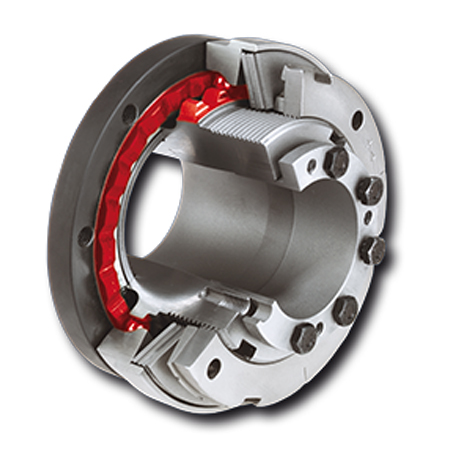
Positive Torque Limiters
Ratcheting – SIKUMAT® SC/SG/ST
Features
- Backlash free in both directions of rotation
- Compact design
- Integral ball bearing for supporting the component to be connected
- Very high response accuracy through the ball principle
- Simple and backlash free fastening onto shaft with integral cone clamping element
- Calibrated micro adjustment of torque setting possible, even post-installation
Function
- When the preset limit torque has been reached the SIKUMAT® ratchets through.
- Automatic re-engagement of the SIKUMAT® after the overload has been eliminated.
- The overload can be indicated by a proximity switch. This means that the drive can be switched off immediately or another control function can be activated.
Synchronous Ratcheting – SIKUMAT® SU/SA/SN
Features
- Synchronous re-engagement after 360°
- Integral fixed bearing
- Driving keyway in the connecting flange for maximum load capacity
- Calibrated micro adjustment of torque setting possible, even post-installation
- Cost effective
Function
- When the preset limit torque has been reached the SIKUMAT® ratchets through.
- Automatic re-engagement of the SIKUMAT® after the overload has been eliminated.
- The overload can be indicated by a proximity switch. This means that the drive can be switched off immediately or another control function can be activated.
Disengaging – SIKUMAT® SR
Features
- Disengages in case of overload – separation of input and output
- Integral fixed bearing
- Keyway in connecting flange for maximum torque capacity
- Calibrated micro adjustment of torque setting possible, even post-installation
- Cost effective
Function
- When the preset limit torque has been reached the SIKUMAT® disengages the input and output.
- After the overload has been eliminated the SIKUMAT® can be switched on again manually.
- This means that an axial switching force must be applied to the switching ring.
Synchronous Disengaging – SIKUMAT® SB
Features
- High degree of consistency of limit torque over the duration of operation through double roller principle
- Switching off in case of overload – separation of input and output
- Synchronous re-engagement after 360°
- Torques up to 10 000 Nm
- For shaft diameters up to 125 mm
Function
- When the preset limit torque has been reached the SIKUMAT® effects a separation of input and output by means of a locking mechanism with integral bearings.
- Following elimination of the overload manual synchronous re-engagement of the SIKUMAT® to the starting position after 360°.
- This requires an axial switching force to be applied to the switching ring.
Friction Torque Limiters
RIMOSTAT® Torque Limiters RSHD – for heavy-duty applications
Features
- Better stability of slipping torque than Belleville spring torque limiters over duration of the operating period
- Adjustment of slipping torque setting according to the number of active springs – not through modification of spring pressure
- Superb wear-behaviour during high energy-input
- High temperature resistant
RIMOSTAT® Torque Limiters RS
Features
- Particularly suitable in applications with frequent slipping
- Better stability of slipping torque than Belleville spring torque limiters over duration of the operating period
- Adjustment of slipping torque setting according to the number of active springs – not through modification of spring pressure
Function
- When the preset slipping torque has been reached the built-in component (e. g. chain wheel) slips.
- During the slipping process, input and output rotate relative to each other and the preset slipping torque continues to be transmitted.
- Inherent in the slipping process is a high energy consumption.
- Re-engagement is not necessary.
Belleville Spring Torque Limiters RT
Features
- Cost effective, simple Torque Limiter
- Adjustment option for pad wear
- 12 Sizes for slipping torques from 0.5 Nm to 10 000 Nm
Function
- When the preset slipping torque has been reached the built-in component (e. g. chain wheel) slips.
- During the slipping process, input and output rotate relative to each other and the preset slipping torque continues to be transmitted.
- Inherent in the slipping process is a high energy consumption.
- Re-engagement is not necessary.
Force Limiters
Resources


